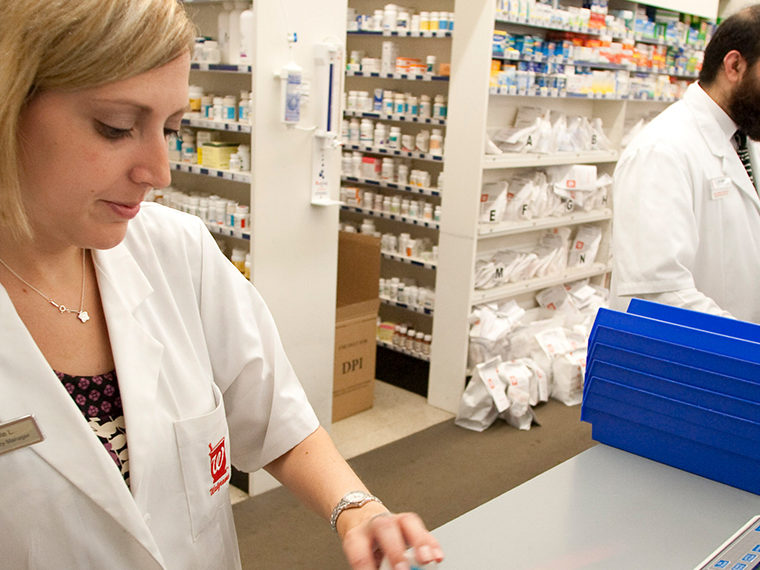Greater subsidies aren’t enough: Lowering the complexity of enrollment is needed to bring more and healthier people into the market
The Affordable Care Act, popularly known as Obamacare, aimed to reduce the high number of uninsured Americans by making medical insurance coverage cheaper and more available. And it did, bringing the number of uninsured Americans down from roughly 47 million in 2010 to close to 27 million in recent years.
That’s still a lot of people lacking health insurance, however.
And there are lots of reasons for that, including repeated efforts to repeal or gut the law. But Obamacare’s foes aren’t the only problem. In the state marketplaces, set up by the law to provide insurance to those shut out of the regular private market, participation remains low, even though federal subsidies can cover a large portion of the cost of premiums.
Opt In to the Review Monthly Email Update.
The low take-up rate is a problem because a smaller insurance pool is likely to contain more sick people who need a lot more medical care than a large pool would, and that leads to higher premiums for everyone in the pool. To hold costs in check and prevent a rush to the exits, marketplaces need to get more people, especially the relatively healthy ones, to sign up.
One solution is to offer more premium subsidies, further lowering the cost of health coverage for lower-income individuals. But “frictions” may also matter for enrollment — for example, complexity of learning about one’s coverage options and subsidies, and the hassle costs of enrolling. A working paper shows how important these frictions are, and offers a solution: reduce the frictions through simple interventions, such as providing targeted information and reminders to enroll.
The research — by UCLA’s Richard Domurat, a recent Ph.D. graduate in economics; Isaac Menashe, associate director of policy evaluation at the Covered California marketplace; and UCLA Anderson’s Wesley Yin — revealed evidence that such simple interventions can be enough to lower the behavioral frictions of searching and signing up for health insurance, resulting in markedly higher enrollment.
What’s more, the authors find that new enrollees are much healthier than people already in the marketplace, so their simple interventions lowered risk to insurers, putting downward pressure on premiums.
“Pairing subsidies with efforts to inform consumers and to simplify enrollment may increase enrollment more than through subsidies alone,” the authors write. Their findings suggest that more concerted interventions that target these same frictions — such as more aggressive outreach, a simpler sign-up process and the use of auto-enrollment — could dramatically increase enrollment while lowering premiums and public subsidy spending.

The ACA was signed into law in 2010. Its marketplaces, or exchanges, aim to help reduce the number of uninsured by giving qualified individuals or small groups a place to buy insurance more cheaply than in the regular insurance market. Tax credits, discounted premiums and other subsidies are intended to make the policies affordable even to low-income consumers. And the exchanges, by creating large pools of the insured, spread the risk and hold down the cost of premiums.
Yet many don’t enroll, partly because the cost of the coverage is higher than consumers are willing to pay. Among the explanations officials have focused on: Many are young and healthy and don’t think they need insurance. Others take advantage of the availability of uncompensated care by hospitals or other providers that eat the cost of treatment by providing financial assistance or writing off bad debts.
The authors, however, looked at a less examined explanation: “frictions,” either from a lack of information about the plans or a result of the complexity of choices consumers face. Even the hassle cost of enrolling can be a barrier.
The researchers conducted a field experiment involving about 87,000 households eligible to buy insurance in the 2016 Covered California state marketplace, but who had not yet selected a plan. This included households that had applied but hadn’t completed enrollment and people who qualified for the marketplace because they were no longer eligible for Medicaid but who hadn’t taken steps to enroll.
Participants were divided into five groups: A control group received only the state’s generic marketing activities. A second group received a letter reminding them about the open-enrollment deadline and where to shop for plans. A third received the basic reminder and an estimate of the household’s subsidy, based on its income and size. Other groups received more details about the plans and their subsidies and information about the plans’ quality ratings.
Overall, those who received any of the reminder letters were 16% likelier to enroll in a plan compared to people in the control group. The different letters had roughly the same effect on enrollment, although for low-income individuals, providing personalized information about their subsidies led to higher enrollment over the basic reminder letter. This suggests that lower-income individuals underestimated their subsidies and, in general, face higher frictions, and would benefit most from interventions that lower these frictions.
The letters were also most successful in boosting enrollment among healthier consumers, which suggests that sicker applicants had already taken the trouble to sign up. Significantly, this finding indicates that continued recruitment efforts that expand enrollment can lower the market risk for marketplace plans.
Reducing the hassle of enrolling can also increase the amount consumers would be willing to pay for coverage, the results suggest. Previous research found that potential marketplace customers would be willing to pay only an average of $100 per month, while the actual cost of coverage was $420. This suggests that subsidies would have to be extremely high if that were the only way to induce these consumers to sign up.
Using a statistical utility model, the authors found that their simple information interventions lowered frictions by an amount equal to between $25 and $54 more per month in subsidies.
“Given the low cost of mailing these letters, this is a large benefit for a program aimed at increasing rates of coverage,” the authors write.
Featured Faculty
-
Wesley Yin
Associate Professor of Public Policy and Management
About the Research
Domurat, R., Menashe, I., & Yin, W. (2019). The role of behavioral frictions in health insurance marketplace enrollment and risk: evidence from a field experiment.






